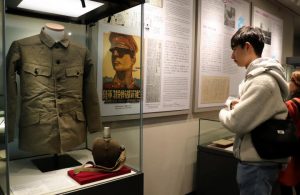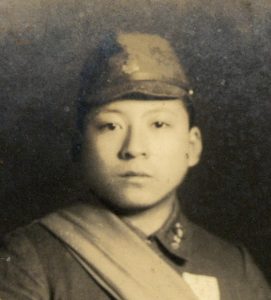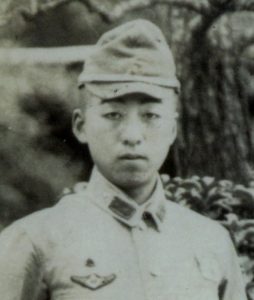Former Akatsuki Corps child soldiers, who trained for suicide attacks and engaged in rescue work after A-bombing, call for end to war in special exhibit at Hiroshima National Memorial Hall
Apr. 12, 2024
Through video testimonies and ‘death poem,’ former soldiers ask for people to “consider protecting life and preserving peace”
by Minami Yamashita, Staff Writer
During the war, there were child soldiers hoping to carry out special suicide attacks at sea who also engaged in rescue work and the disposal of corpses in Hiroshima immediately after the atomic bombing. The children belonged to a secret unit in the Japanese Imperial Army’s Shipping Command, commonly known as the Akatsuki Corps, which trained special suicide attack soldiers. The former child soldiers are the focus of a special exhibit currently being held at the Hiroshima National Peace Memorial Hall for the Atomic Bomb Victims, located in Hiroshima’s Naka Ward. With the 80th anniversary of the atomic bombing approaching next year, their hope is that people will “consider protecting life and preserving peace.”
The Akatsuki Corps, headquartered in the Ujina area in the city’s present-day Minami Ward, was the only functioning military unit remaining in Hiroshima after the bombing and engaged in rescue efforts and aid operations for civilians. Among the members of the corps were child soldiers, aged 15 to 19, in a special cadet program belonging to the 10th educational unit of the Army’s Marine Training Division, stationed in Konoura (Etajima City).
Minoru Sawano, 96, a resident of Nanao City in Ishikawa Prefecture, enlisted in the military at the age of 17. “In those days, it was a given for people to die for the Emperor,” Mr. Sawano said. Day in and day out, they secretly trained for suicide attacks using a 5.6-meter plywood boat nicknamed the “Maru-re.” Their superior officer is said to have told them, “You are sacrificial pawns. It’s your duty to die for your country.” Mr. Sawano said, “I fully intended to reunite with my fellow soldiers at Yasukuni Shrine [after we died].”
Following the dropping of the atomic bomb, the 10th educational unit headed to Hiroshima City on the Maru-re and other vessels. Mr. Sawano and his fellow soldiers engaged in rescue efforts and the disposal of corpses in the central part of the city. “There were people with their heart spilling from their body, and others who were screaming. It was hell on earth. It truly hit me that this was war.” Recalling that time, he now calls for the end to war.
Nobuo Ito, 96, who currently lives in Tono City in Iwate Prefecture, served in the Army Ship Communications Reserve while “burning with patriotism in preparation for a decisive battle on the Japanese mainland.” When Mr. Ito witnessed the “city of death” that was Hiroshima’s central area, he felt the urge to speak to his unit commander. “We have to stop fighting this war,” he said. Angered, the commander replied, “How can a soldier be so weak?” Mr. Ito now says emphatically, “Wars that kill the innocent must never be waged.”
The special exhibit at the Peace Memorial Hall will be held until the end of February next year. In addition to video testimonies of nine former child soldiers, including Mr. Sawano and Mr. Ito, 12 related items, including a military uniform, are also on display. An album that includes the following ‘death poem’ of farewell is also exhibited.
My friends
I will die with a smile
For His Majesty the Emperor
Let’s meet each other again
At the shrine of Kudan (Yasukuni Shrine)
Isao Hashimoto, a curator at the Peace Memorial Hall, said, “I want people to understand the cruelty of war by putting themselves or their children in the place of the child soldiers.”
(Originally published on April 12, 2024)










